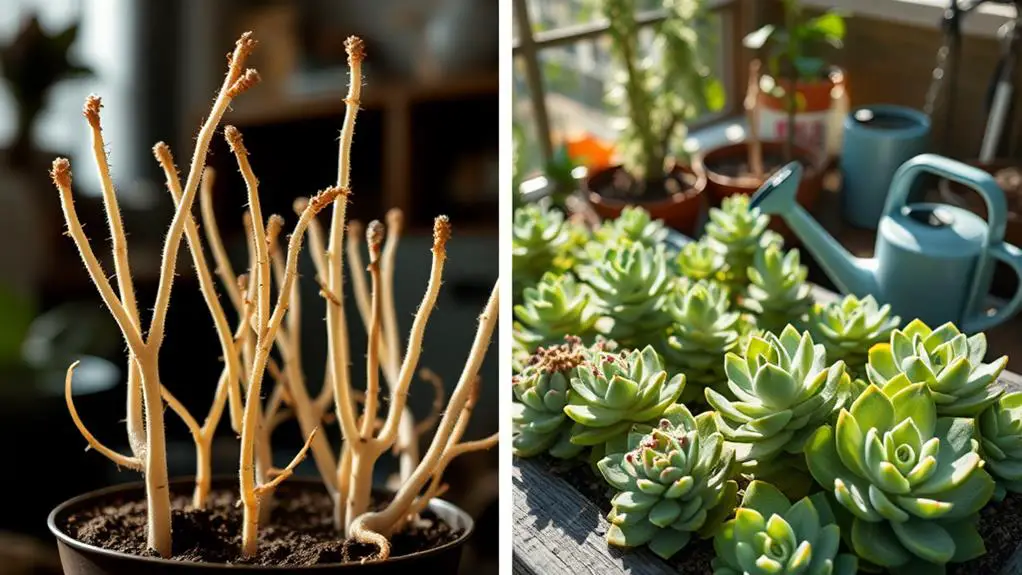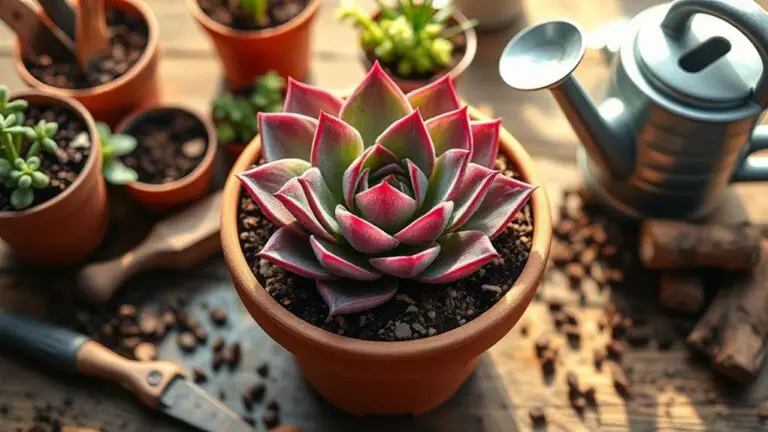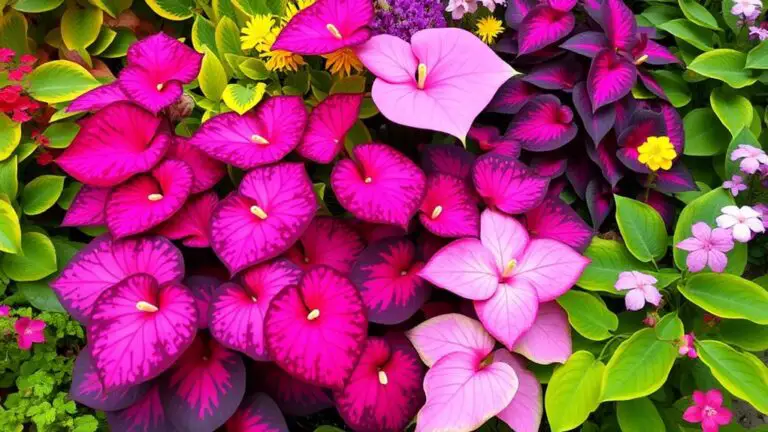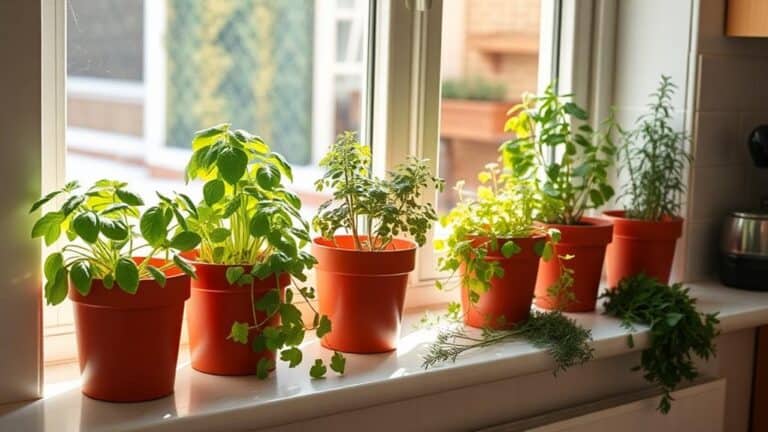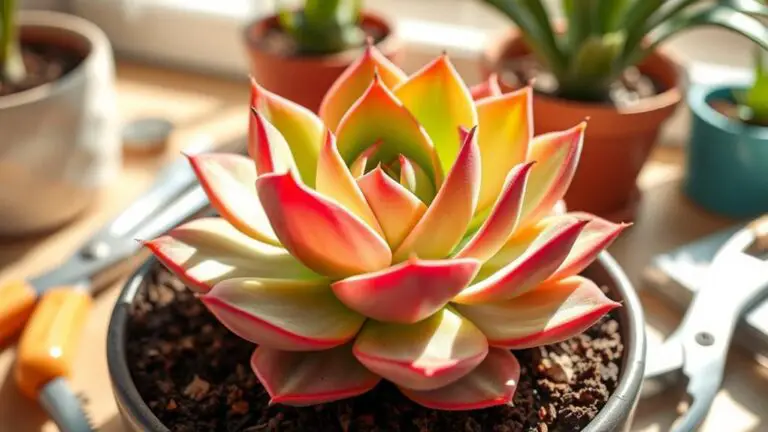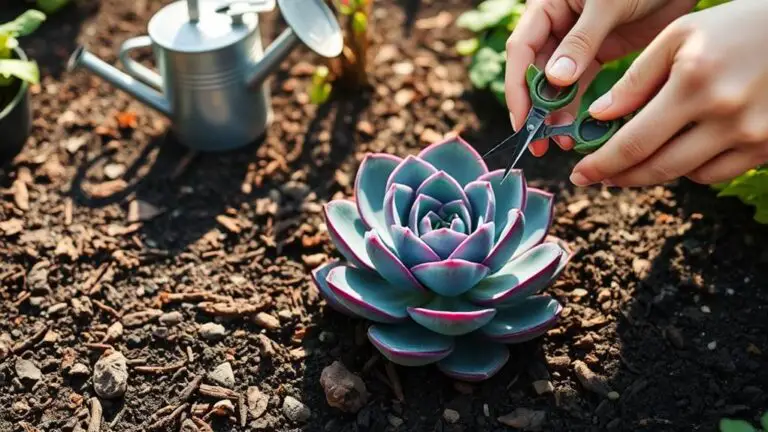Identifying and Fixing Etiolation in Succulents: A How-To Guide
Noticing your succulents looking a bit stretched and pale? You might be dealing with etiolation, a common issue due to insufficient light. By understanding the causes and recognizing the signs, you can take steps to correct and prevent this problem. Fixing etiolation involves more than just increasing sunlight; it requires a careful balance of light exposure, pruning, and proper watering practices. Ready to transform your leggy succulents back to their compact, vibrant selves? Let's explore the essential steps and best practices to bring your plants back to health.
Understanding Etiolation
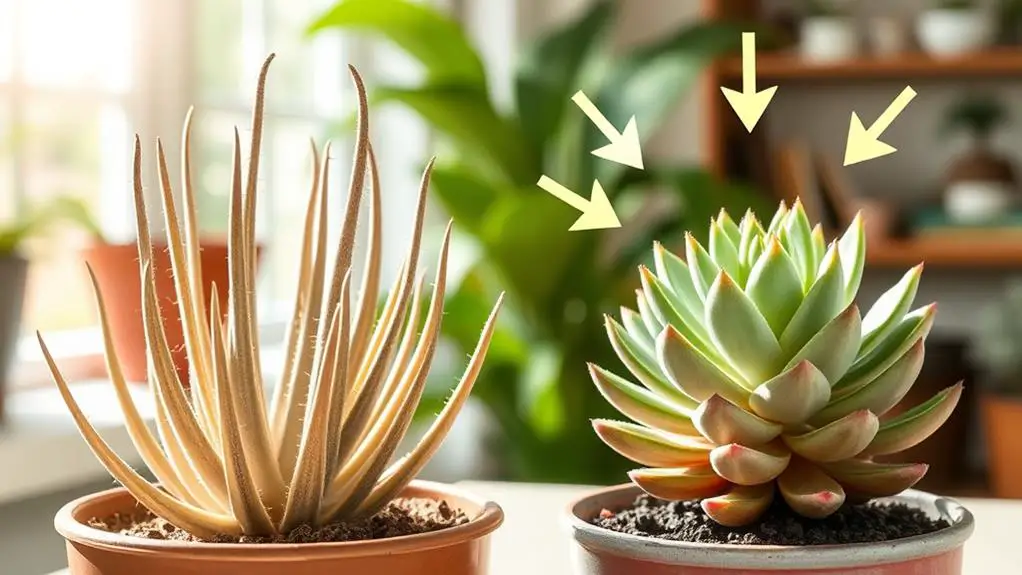
Etiolation is a condition where plants exhibit abnormal growth due to insufficient light, causing them to stretch towards the nearest light source.
When succulents don't get enough light, they become etiolated and start stretching out. You'll notice their stems grow longer and their leaves become pale or yellowish instead of the usual vibrant green leaves. This succulent stretching makes them look weak and disfigured.
Healthy growth requires enough light, so when it's insufficient, these plants respond quickly, often within days.
While you can't reverse the stretching, you can help your succulents bounce back by adjusting their light conditions. Proper light will encourage stronger, healthier growth and improve their overall appearance.
Causes of Etiolation
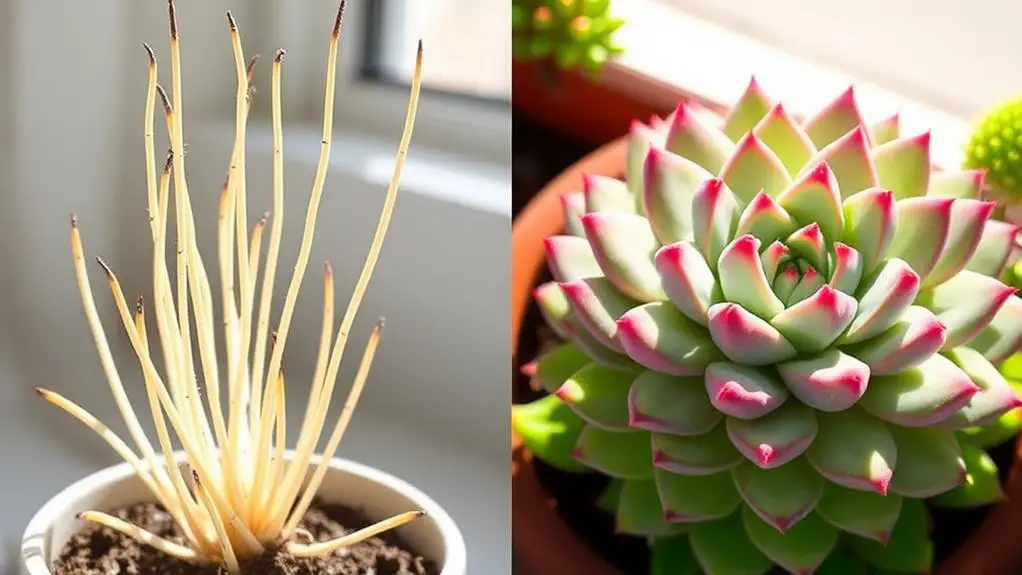
Etiolation in succulents often happens because they're not getting enough light, causing them to grow tall and weak.
Warm temperatures can make this worse, as your plants may keep growing without enough light.
Overwatering in low-light conditions also contributes to stretching, so it's important to adjust your watering habits to match the amount of light your succulents receive.
Insufficient Light Exposure
When your succulent starts looking stretched out with elongated stems and spaced-out leaves, it's likely suffering from insufficient light exposure.
This stretched growth, or etiolation, happens as your plant reaches for more light. Good news: you can fix it!
Here are some signs of stress to watch out for and steps to add more light:
- Pale or Yellowish Coloration: Lack of chlorophyll makes your succulent lose its vibrant color.
- Rapid Stretching: This can occur within days, so check your plant often.
- Weak Stems: They may become fragile and prone to breaking.
- Spaced-Out Leaves: Leaves grow farther apart than usual.
To help your etiolated succulents, move them to a brighter spot where they can get at least 12 hours of light daily.
Improper Watering Practices
While insufficient light exposure is a common culprit behind etiolation, improper watering practices often exacerbate the problem.
Overwatering succulents can lead to root rot, especially in low-light conditions, making it hard for your plant to absorb nutrients and light. This results in etiolated growth.
On the other hand, insufficient watering stresses your succulents, causing them to stretch towards light sources.
To prevent stretched succulents, establish a consistent watering schedule that matches your plant's light exposure.
Watch out for yellowing leaves and mushy stems, signs of improper watering.
Let the soil dry out completely between waterings.
Importance of Sunlight
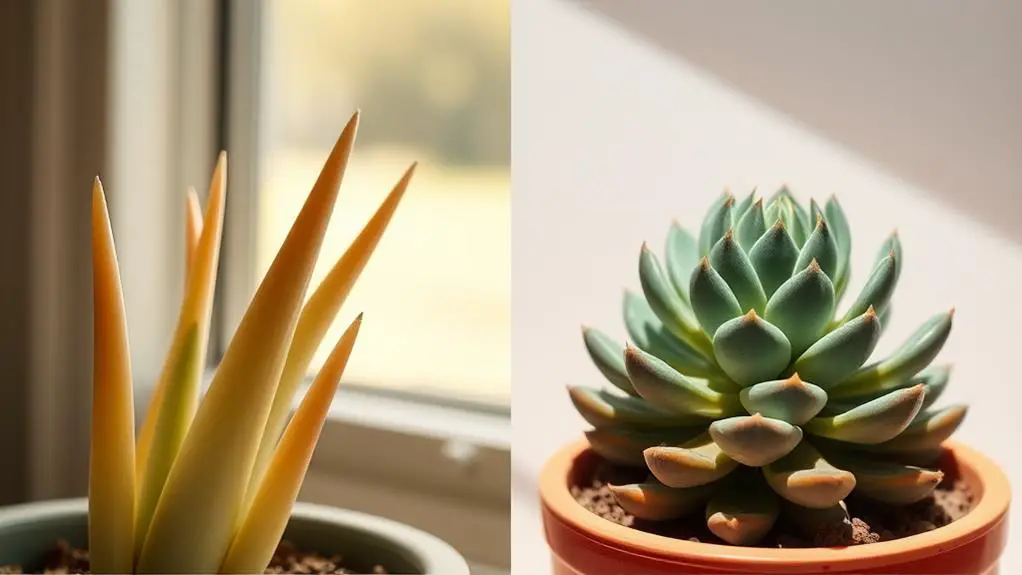
For succulents, sunlight isn't just beneficial but essential, playing a key role in their overall health and appearance.
Adequate sunlight supports photosynthesis, helping your succulents convert light into the energy they need to grow and thrive. Without enough light, your plants can become etiolated, showing pale, stretched-out stems and spaced-out leaves.
To guarantee your succulents get the right light:
- Place them in bright, indirect sunlight: South-facing windows are perfect.
- Use grow lights: These can supplement natural light, especially in low-light conditions.
- Monitor your plants: Look for vibrant green color, indicating sufficient light.
- Adjust light exposure: Aim for 12-14 hours daily to prevent etiolation.
Signs of Etiolated Succulents
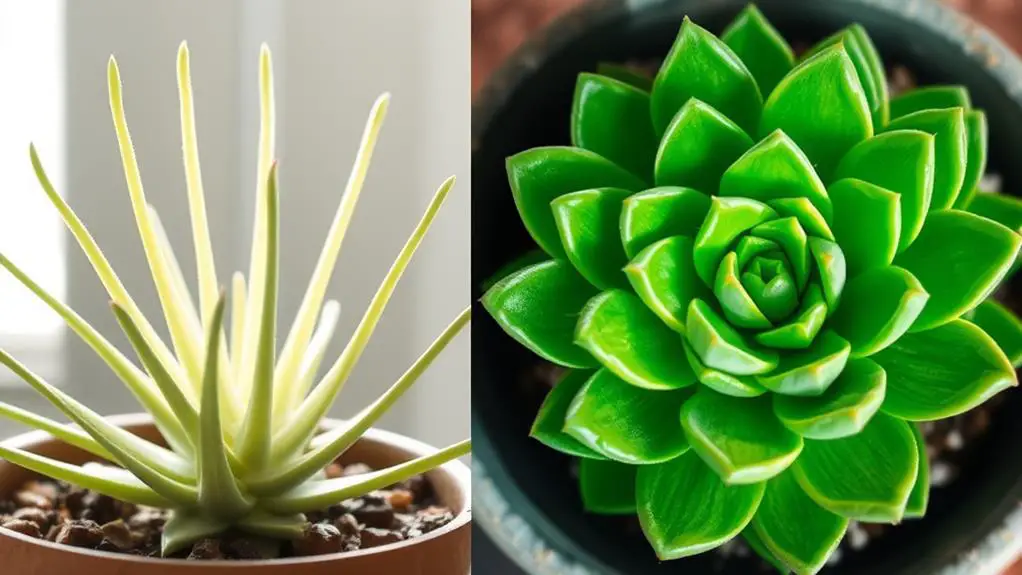
When you notice your succulent developing stretched stems and pale leaves, it's a clear sign that it's not getting enough light.
The plant stretches toward any available light source, creating a lanky appearance with gaps between the leaves.
This weak growth pattern and yellowish coloration are key indicators of etiolation that you can easily spot.
Pale Leaf Coloration
Pale leaf coloration is a clear sign that your succulent is etiolated, primarily caused by a lack of sufficient light.
When etiolated plants don't get enough light, they can lose their vibrant green color and turn a pale yellowish hue. This change means your succulent stretches to find more light, which it needs to stay healthy.
To help identify and address pale leaf coloration, try the following:
- Inspect leaves regularly: Check for changes in leaf coloration to catch early signs of etiolation.
- Adjust light exposure: Confirm your succulent gets enough light, as insufficient light is the main cause.
- Rotate plants: Rotate your succulents to confirm even light distribution.
- Use grow lights: Supplement natural light with grow lights if needed.
Stretched Stem Growth
Stretched stem growth in succulents is a telltale sign of etiolation, where the plants develop elongated, weak stems and leaves become spaced out as they stretch towards light sources. You'll often see pale or lighter-colored leaves due to the lack of chlorophyll. The stems might lean towards the light, and the internodes (spaces between leaves) become longer. This results in a lanky appearance, sometimes called "cactus spaghetti." Identifying these signs early lets you take action, like increasing light exposure, to promote healthier, new growth and strong stems.
| Symptom | Description |
|---|---|
| Elongated stems | Weak growth reaching for light |
| Spaced-out leaves | Gaps between leaves increase |
| Pale leaf color | Less chlorophyll due to shade |
| Leaning towards light | Stems bend towards light |
Correcting Etiolated Succulents
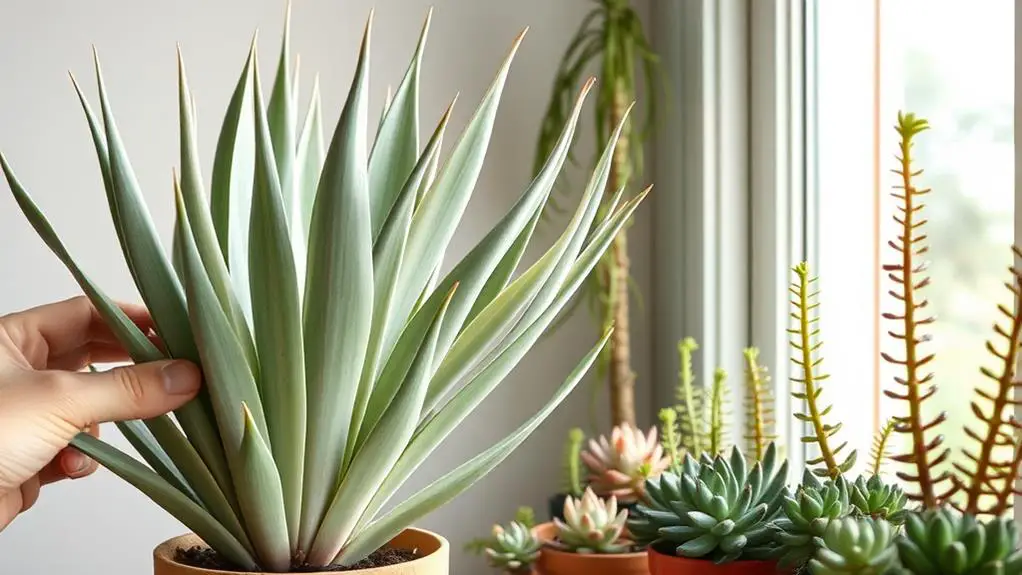
To correct etiolated succulents, start by gradually increasing their light exposure. Move them closer to a bright window or use grow lights, aiming for 12-14 hours of light daily. This helps your succulents grow compact and healthy.
Next, prune the etiolated stem back to where the leaves are closely spaced, encouraging new growth.
Here's a simple guide to fixing etiolated succulents:
- Increase Light: Gradually provide more light to prevent sunburn.
- Prune Stems: Cut back to healthy, compact areas.
- Callous Ends: Let the cut ends dry for a few days.
- Replant and Monitor: Plant in well-draining soil and watch for signs of new growth.
Preventive Measures
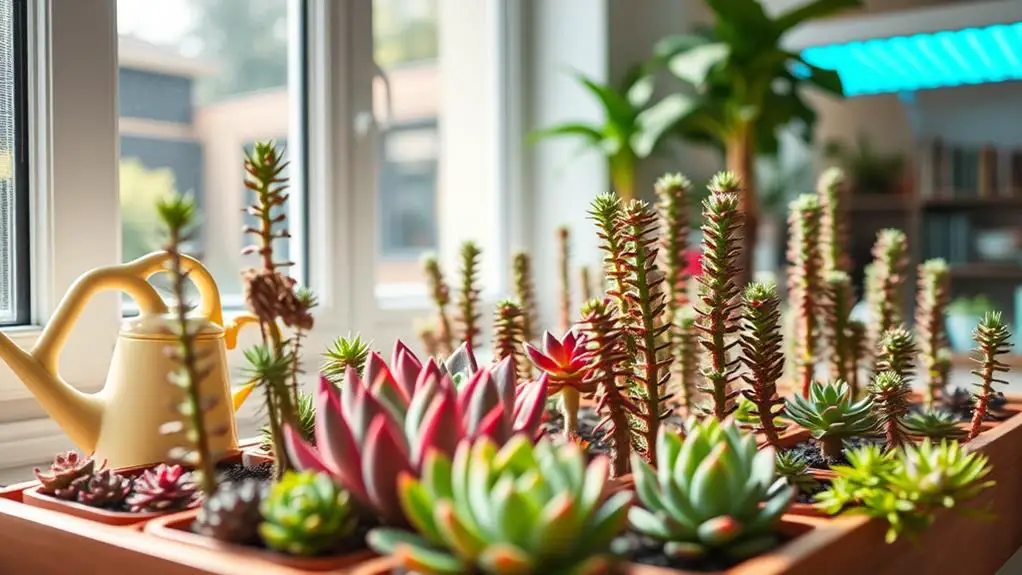
While correcting etiolated succulents is important, preventing the issue in the first place is even better. Succulents need a lot of light to stay healthy. Aim for at least 12-14 hours of bright light daily.
Position your plants in south-facing windows or consider using a grow light to guarantee they get enough light gradually. Place LED grow lights 6-12 inches above the plants.
Regularly check for any signs of light deficiency, like stretching or pale color. Rotate your pots periodically to promote even growth, and experiment with different types of grow lights to find what works best for your space.
Keeping your succulents deep green and healthy is key to prevent etiolation.
Community Support & Resources
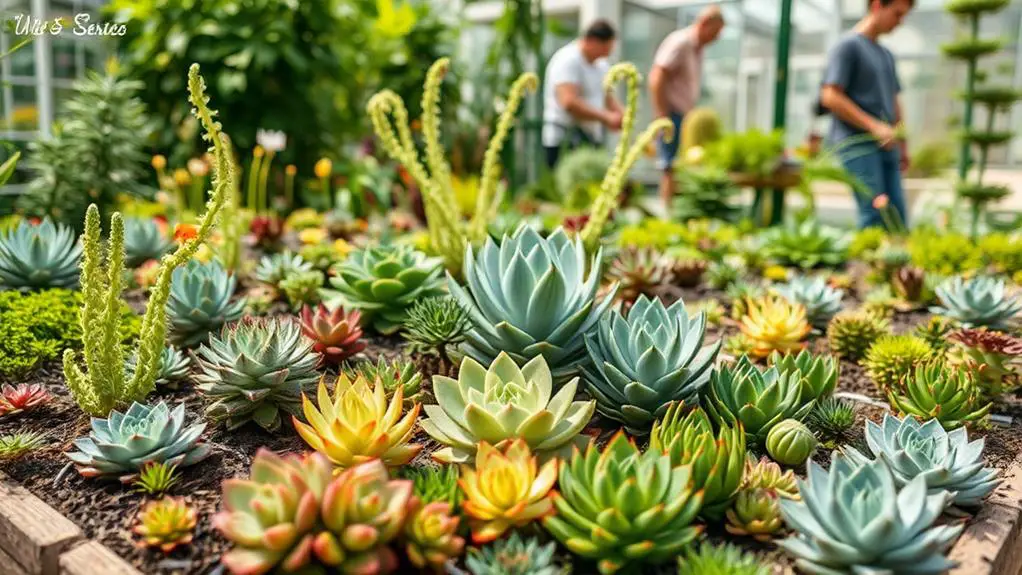
A strong community of fellow succulent enthusiasts can be an invaluable resource when tackling the challenges of etiolation. Engaging in community discussions not only offers shared experiences but also provides valuable insights and practical care tips.
Here are some great ways to connect and learn:
- Join a Facebook group: Find groups dedicated to succulent care, where you can ask common questions and share experiences.
- Subscribe to a free course: Enhance your knowledge with structured learning on succulent care.
- Read articles on common issues: Gain practical care tips for addressing specific concerns like etiolation.
- Engage with FAQs: Clarify common questions about recovery potential and the impact of severe etiolation.
Participating in these activities can greatly improve your succulent care skills.
Frequently Asked Questions
How to Fix Etiolation in Succulents?
To fix etiolation in succulents, gradually increase their light exposure. Trim and propagate the stems, allowing cut ends to callous before replanting. Use grow lights for 12-14 hours daily and adjust care practices as needed.
Is Etiolation Bad for Succulents?
Yes, etiolation is bad for succulents. You'll notice weak, elongated stems and pale leaves. This indicates insufficient light, making the plant more prone to pests and diseases, and ultimately less attractive and healthy overall.
Can You Reverse Etiolation?
You can't completely reverse etiolation, but you can rejuvenate your succulent. Trim the stem where leaves are close, let it callous, and replant in well-draining soil. Gradually increase light exposure to encourage healthy growth.
How to Stop Succulents From Getting Leggy?
To stop succulents from getting leggy, give them 12-14 hours of bright, indirect sunlight daily. Rotate them regularly for even light, and adjust their placement if they start stretching. Maintain a consistent watering routine to match light exposure.
Conclusion
You've got this! By understanding etiolation, recognizing its causes, and knowing how to fix it, you can keep your succulents happy and healthy. Remember, gradually increase their light exposure and prune back any elongated stems. Don't forget to monitor your watering, too. With a bit of patience and care, your plants will thrive. Keep learning, stay curious, and enjoy watching your succulents grow strong and vibrant. Happy gardening!

